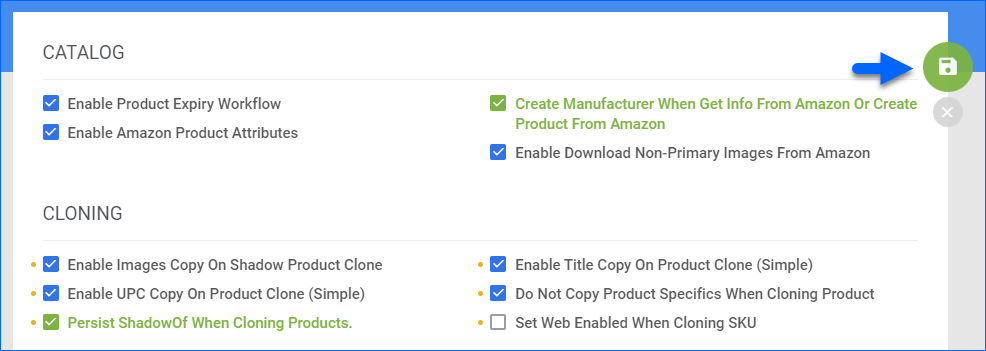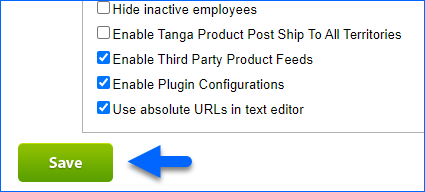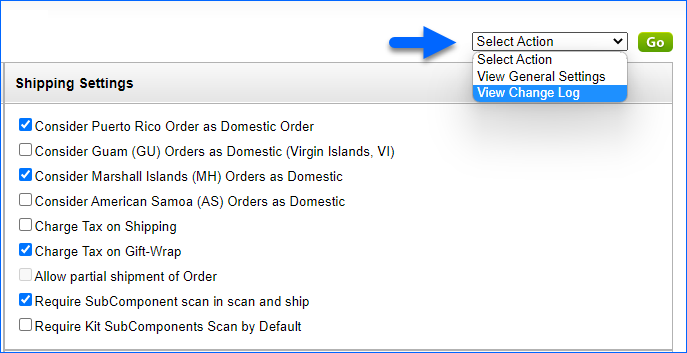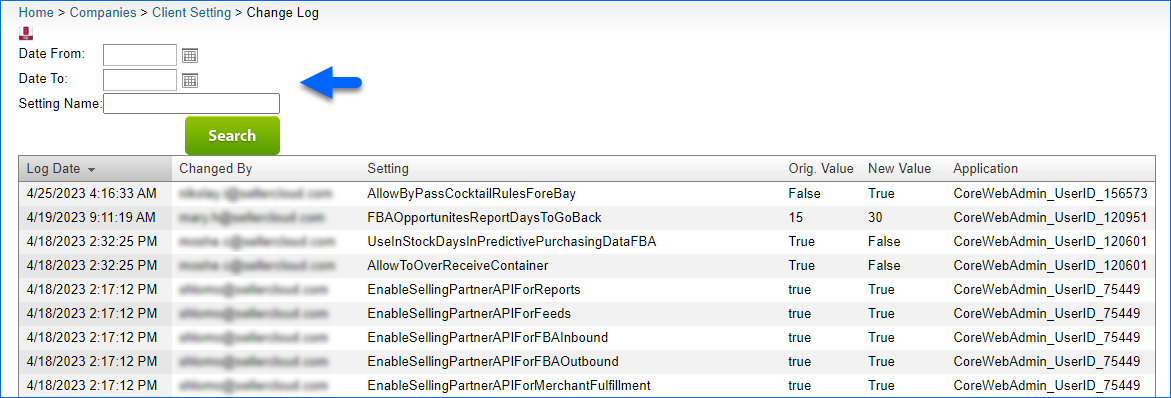Overview
In this article, you will learn about Client Settings in Sellercloud. Sellercloud users with the Client Admin role can control account-wide client settings to enable or disable features and change how they work. There are features that you must enable on the client level first to use at the company level.
Changes to client settings usually take effect right away. Refresh your browser’s cache if you don’t see the result immediately.
Client Settings
Client settings are sorted into the following categories:
- Catalog – settings related to products and product management, properties, cloning, security, and more.
- Channels – various settings related to specific channels only – orders, inventory, etc.
- Custom Calculations – settings related to custom Inventory or Price calculations for each separate channel as well as custom product filtering.
- Emails – settings for emails and notifications.
- Fulfillment – settings related to order fulfillment – picking, shipping, carriers, and more.
- Inventory – settings related to product inventory.
- Invoice – settings related to invoices.
- Kit – settings related to kit products.
- Localization – general localization settings.
- Orders – various settings related to order management, shipping and tracking, wholesale pricing, discounts and taxes, and more.
- Products – more settings related to products, bulk updating, and more.
- Purchasing – settings related to purchase orders and vendors.
- Reporting – settings related to reports.
- RMA – settings related to processing returns.
- Security – settings to enhance security.
- Shipping – settings to consider specific orders as domestic.
- UI – settings to modify the Sellercloud user interface.
Access Client Settings
To access and update your client settings:
- Click your profile name in the top right and select Client Settings.
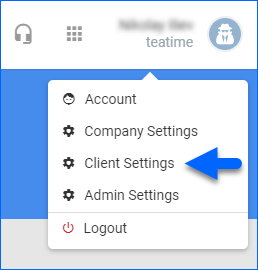
- Click Advanced to show or hide additional settings. Such settings are marked with an asterisk in the list.
- Click the categories on the left to explore categories, or use the search bar on the top right to find specific settings quickly.
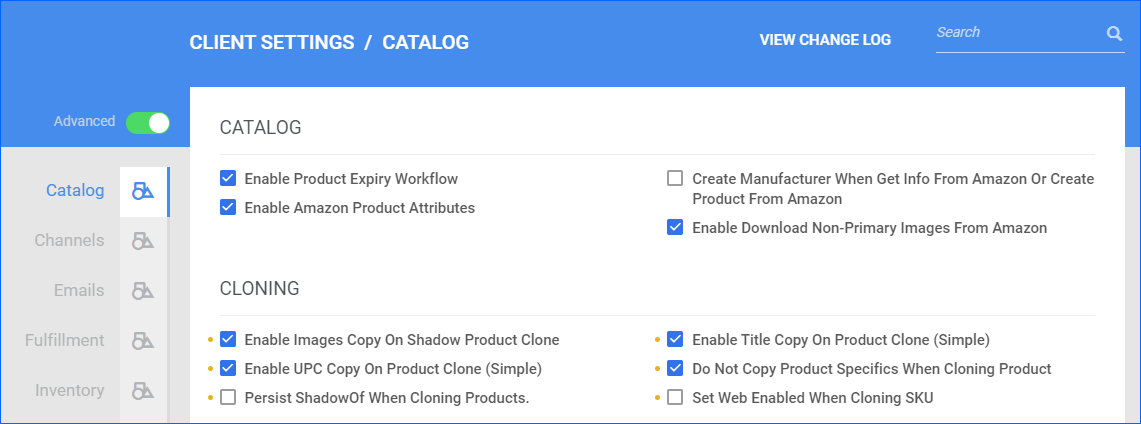
- Make sure to click the green Save button after making changes.
View Change Log
You can monitor changes made to the client settings with the change log. The change log shows all changes made on a client level and who made each change.
To view the change log, click View Change Log on the Client Settings page.
The log shows:
- The date of each change
- The person who made the change
- The setting
- Its original value and the new value
- The application.
The application column shows IDs that show what application has made the change. For example, it will tell you if a user has signed in and made a change manually from a browser or if something else triggered it, such as a scheduled task.
You can filter the change log by Setting Name or Log Date.
Overview
In this article, you will learn about Client Settings in Sellercloud. Sellercloud users with the Client Admin role can control account-wide client settings to enable or disable features and change how they work. There are features that you must enable on the client level first to use at the company level.
Changes to client settings usually take effect right away. Refresh your browser’s cache if you don’t see the result immediately.
Client Settings
Client settings are sorted into the following categories:
- Catalog – settings related to products and product management, properties, cloning, security, and more.
- Channels – various settings related to specific channels only – orders, inventory, etc.
- Custom Calculations – settings related to custom Inventory or Price calculations for each separate channel as well as custom product filtering.
- Emails – settings for emails and notifications.
- Fulfillment – settings related to order fulfillment – picking, shipping, carriers, and more.
- Inventory – settings related to product inventory.
- Invoice – settings related to invoices.
- Kit – settings related to kit products.
- Localization – general localization settings.
- Orders – various settings related to order management, shipping and tracking, wholesale pricing, discounts and taxes, and more.
- Products – more settings related to products, bulk updating, and more.
- Purchasing – settings related to purchase orders and vendors.
- Reporting – settings related to reports.
- Repricing – enable custom price calculations for specific channels.
- RMA – settings related to processing returns.
- Security – settings to enhance security.
- Shipping – settings to consider specific orders as domestic.
- UI – settings to modify the Sellercloud user interface.
Access Client Settings
To access and update your client settings:
- Click Settings > Client Settings.
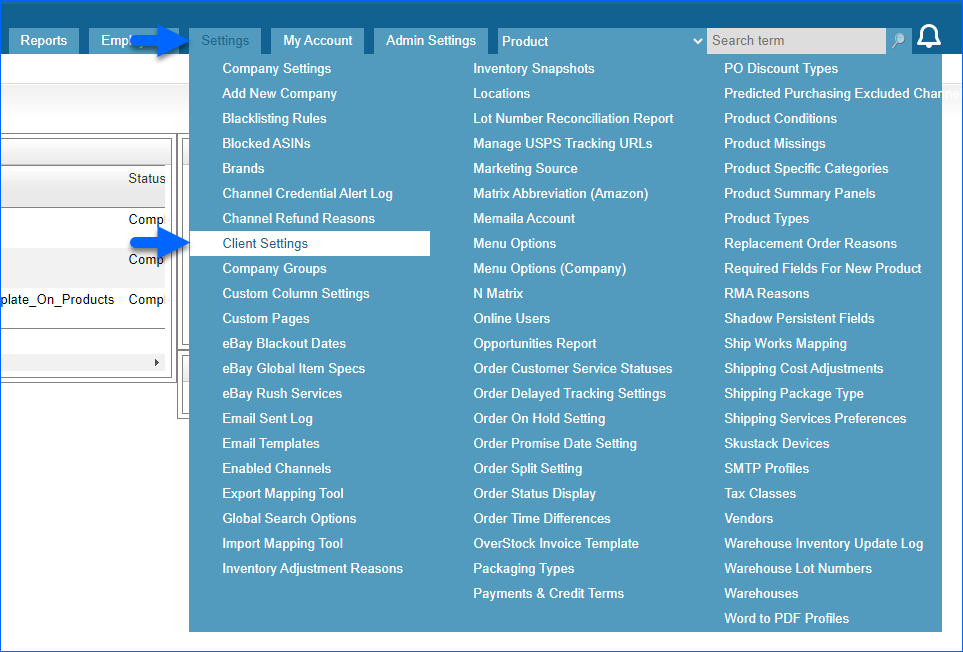
- Scroll through the categories on the page or use the shortcut Control / Command + F to search for a specific setting by name.
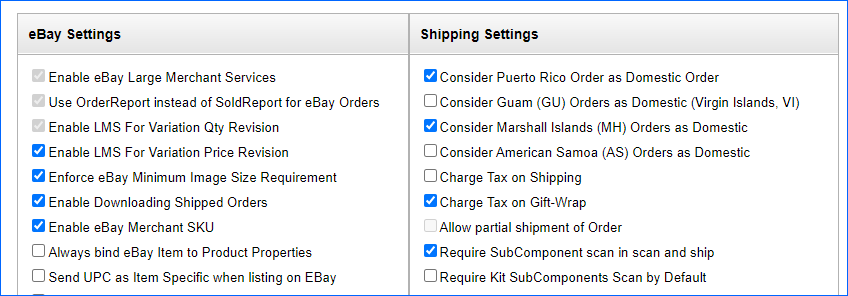
- Make sure to click the green Save button after making changes.
View Change Log
You can monitor changes made to the client settings with the change log.
To view the change log, on the Client Settings page, click Select Action, then View Change Log > Go.
The log shows:
- The date of each change
- The person who made the change
- The setting
- Its original value and the new value
- The application.
The application column shows IDs that show what application has made the change. For example, it will tell you if a user has signed in and made a change manually from a browser or if something else triggered it, such as a scheduled task.
You can filter the change log by Date From, Date To, and Setting Name.
